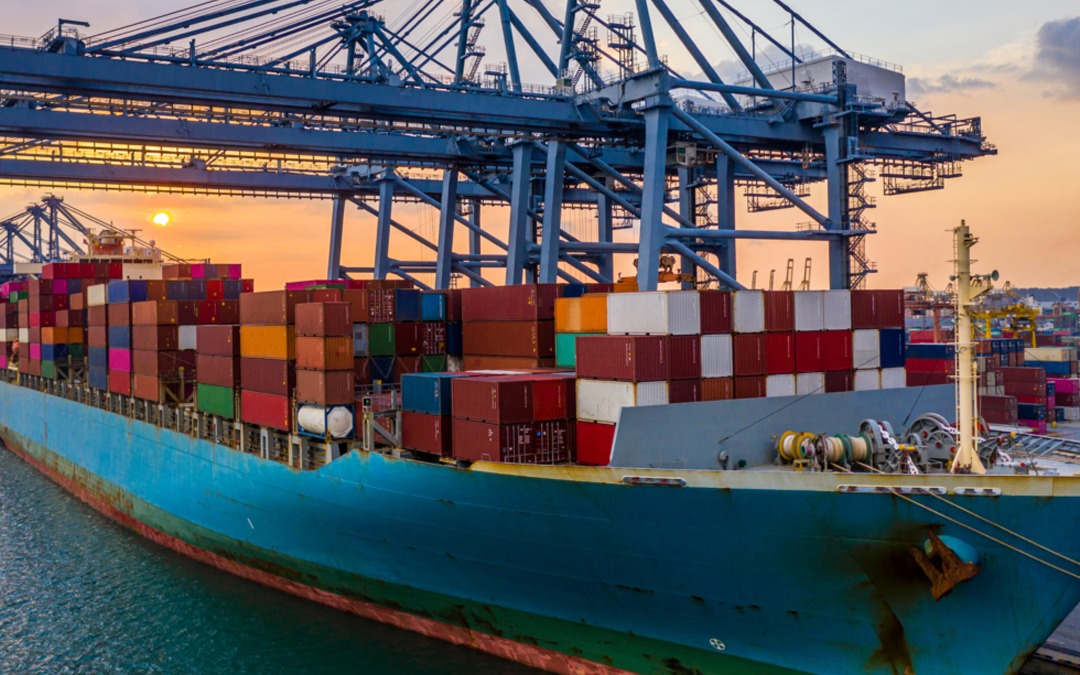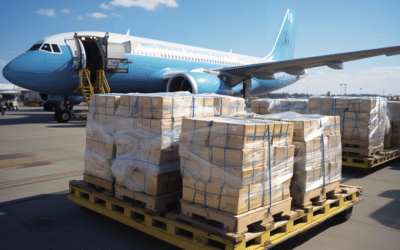Maritime is one of the two forms of transportation that bears and supports the entire weight of our global trade. With all of the sustainability trends we’ve seen for over-the-road transportation methods and climate action being taken seriously, what does the future of this industry look like in terms of maritime sustainability trends?
Article Overview
Global Greenhouse
Global shipping creates 3% of total greenhouse gasses on the planet. In 2020, worldwide shipping produced roughly 930 million metric tons of carbon dioxide. Today it reaches closer to 1 billion metric tons. People living near Los Angeles and Long Beach ports are more susceptible to developing cancer-related illnesses. This is due to the vast amount of exhaust in the Los Angeles basin.
The international shipping community is painfully aware of this. The United Nations’ International Maritime Organization (IMO) is working diligently to monitor and enforce maritime sustainability practices. One of the practices is through the Sustainable Shipping Initiative (SSI) founded in 2010.
Plotting the course of sustainability
The IMO is working to cut ocean-vessel emissions in half in the next 25 years. Their goal is to set an expectation for shippers to begin to steer their vessels toward using transitional fuel. The SSI plotted a course by laying a roadmap for the path to a carbon-neutral ocean shipping sector. They now have milestones planned throughout the next 20 years.
In the 2020s, the roadmap begins with a foundation of standardized tools and resources to better implement maritime spatial planning. Maritime spatial planning (MSP) is a way to manage human activities in our oceans and seas to ensure they are efficient, safe, and sustainable.
The roadmap emphasizes research and pilot programs to document and share best practices throughout the rest of this decade and to have strengthened ocean governance and progressive improvements through the 2030s. The goal is to have universal processes and performance standards in place by 2040.

Alternative fuels
The main research and tests in the field are to improve the fuels used to power the vessels carrying containerized freight. Almost every vessel today relies heavily on diesel engines to generate electricity for power, but the requirements of the IMO to cut emissions are already in effect.
Liquified Natural Gas
Liquified natural gas (LNG) is at the top of the list of alternative fuels for maritime vessels. When LNG is in a cool state and condensed into its gaseous state, it is 600 times smaller by volume. This makes it much easier for transport and storage. Although this energy source is still considered a fossil fuel, the EU Taxonomy regards it as a temporary, but necessary step in the transition toward the future of renewable energy.
Methane strategy
Methane has 84 to 86 times the climate degradation potential than carbon dioxide. This is the second most dangerous greenhouse gas that affects the environment. The reduction of methane is a priority in the European Green Deal.
Green methane is a renewable form of LNG. To create it, you combine captured CO2 and green hydrogen. This process is carbon-negative by pulling excess CO2 out of the atmosphere and converting it to energy.
Ammonia
Ammonia contains an abundance of hydrogen which makes it a perfect candidate for fuel adaptation. It is known as the key ingredient in fertilizer and cleaning products.
When ammonia is used as a fuel, the only element emitted is… wait for it… water.Ammonia is expected to become the leading energy source for the maritime sector by 2050. Startups like Amogy are already working diligently to develop a fully ammonia-powered system. They started with a small tugboat in New York State. Which has run on diesel generators and electric motors for 65 years. Amogy expects the boat to be sailing around waterways by later this year. They’re also working with regulatory parties to identify any potential setbacks.
Reducing emissions
The EU began funding the Nautilus initiative in 2020, which aims to develop an “integrated marine energy system” that will use liquified natural gas. The end goal of the initiative is to build technology that replaces internal combustion engine-based generators. These are currently being used with a solid oxide fuel cell-battery hybrid set.
Once engineers develop the engines, they will have the capability to convert LNG into electricity to power the battery without the need for burning the gas. This approach is advantageous because both the fuel cell and the battery drive the ship, and utilizing the chemical energy from LNG in this manner results in even more potent power from a highly sustainable source.
Challenges for implementation
The only obstacle is the sheer amount of space that these engines take up. Solid oxide fuel cells are certainly available, but they’re mostly targeted and utilized toward power generation plants located in cities, indicating just how large they are.
A typical ocean liner — not a containerized one — requires 40 to 60 megawatts of power to run. That’s roughly the same amount to power a town of around 10,000 houses. European suppliers can only offer oxide fuel cells that generate 10 kilowatts of power, which is a fraction of the required amount.
The Nautilus initiative has developed fuel cell engines that can reach up to 30 kilowatts and intends to lump them together with others to reach the 40 to 60-megawatt goal for power. The project hopes to power a passenger ship using the engine by 2030, and only when they achieve that will they be able to move on to a containerized vessel.
Maritime sustainability trends for the future
Unfortunately, it is going to be quite a while before the maritime sector can make a full transition to carbon-neutral power, and some of us may not be around to see it. But between the EU taking climate actions by setting a benchmark for the industry, and startups like Amogy doing what they can to develop a sustainable fuel and energy source, we’ll get there. People living near heavily polluted ports, and anywhere else, can know that their grandchildren won’t have to breathe in the same fumes that they’ve had to.
Related: 2023 Outlook: Adaptability






